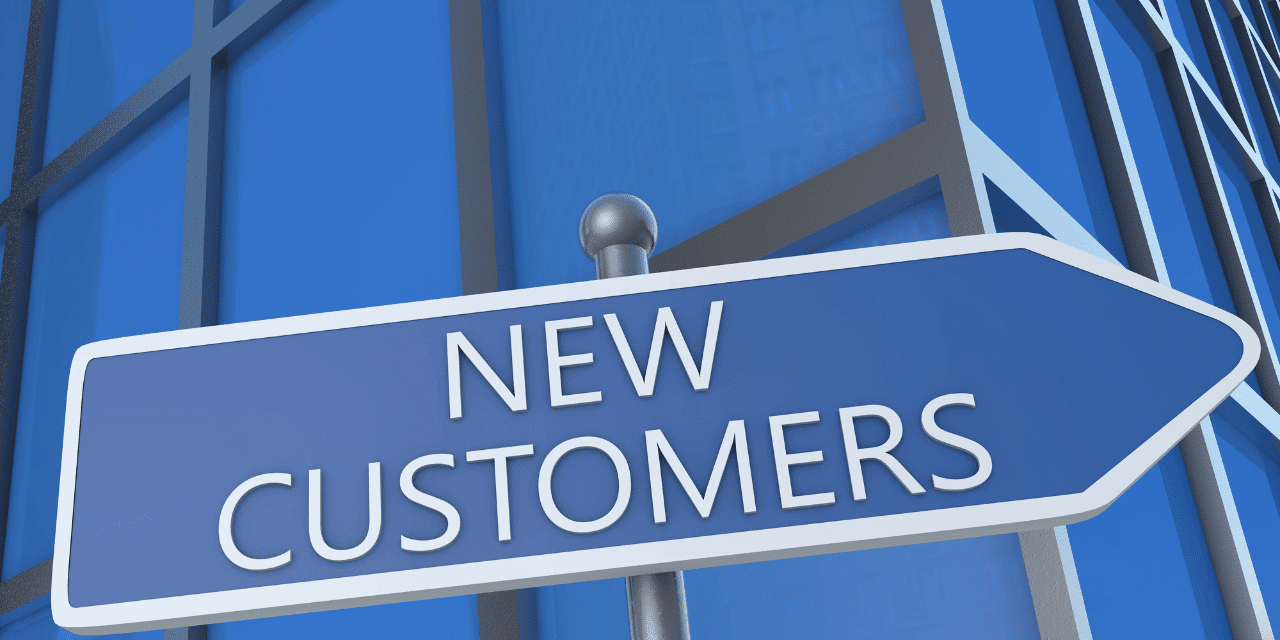Customer satisfaction is more than just a concept; it’s the lifeblood of modern business, and it should be something driving business owners all hours of the day. In a world where choices are nearly infinite, and loyalty is hard to win, understanding and prioritizing customer satisfaction has become a critical success factor for companies across industries.
In our official TextExpander guide, we will look into the world of customer satisfaction: its importance, the factors that influence it, and the strategies businesses can employ to improve it. Whether you’re a:
- Business owner
- Customer service professional
- Retail employee
This guide will provide valuable insights to help you learn about improving customer satisfaction.
What is customer satisfaction?
Customer satisfaction is the measure of how well a product or service meets or exceeds a customer’s expectations of what they’ll receive. It includes every:
- Interaction…
- Touchpoint…
- Experience…
…that a customer has with your company. From the initial purchase to ongoing support, customer satisfaction is a continuous process that requires:
- Attention
- Care
- A genuine understanding of the customer’s needs and future wants
In a competitive market, where choices are everywhere with the tap of a screen, customer satisfaction is not just a goal; it’s a necessity. It’s what builds trust, fosters loyalty, and ultimately drives success. In the following sections of our guide, we’ll look at how businesses can cultivate this essential aspect of their customer relationships.
The importance of customer satisfaction
Customer satisfaction is not just a metric; it’s your north star that guides businesses in virtually every industry. Why does it matter so much? Let’s break it down.
Customer retention
High customer satisfaction goes hand in hand with customer retention. When customers are satisfied, they stick around and don’t look for competitors. They become loyal brand ambassadors, returning time and again to the products or services they love that you offer.
It’s not just about making a sale; it’s about building a relationship. High customer satisfaction creates a connection that goes beyond a single transaction.
Company reputation
Good or bad, word of mouth spreads at the speed of light. High customer satisfaction leads to positive reviews on Facebook, Google, and Yelp recommendations and a reputation that can set a company apart from the competition.
It’s the difference between being a fleeting trend and a trusted name. A satisfied customer doesn’t just return; they bring others, amplifying the company’s reach and impact. Here’s a list of some customer experience scripts that can also help improve your reputation.
Increased customer lifetime value
Satisfied customers are valuable customers – simple, right? They’re more likely to explore other products, invest in premium upgrades, and become long-term partners for a company. High customer satisfaction translates into increased customer lifetime value, turning a one-time buyer into a lifelong brand advocate.
It’s an investment in the future, a commitment to understanding and meeting customer needs at every stage of their journey.
Identifying pain points
Low customer satisfaction scores are not just a warning sign but an opportunity. They highlight the areas where a business can improve, the pain points that need attention, and the gaps that need filling in processes. It’s a roadmap to enhancement, a guide to improving products and services, and more aligned with customer needs and expectations. Remember—all feedback is a gift!
Improving products and services
Low customer satisfaction is a call to action for a business owner. It’s your prompt to look deeper, to understand what’s missing, and pivot where necessary. It’s about taking feedback seriously and using it as a tool to refine and enhance what’s offered by your organizations.
Evaluating team performance

Evaluating team performance is a multi-step process; customer satisfaction provides a valuable perspective. By focusing on metrics like initial response time, resolution time, and the number of transfers, businesses can gain insights into their team’s strengths and areas for improvement.
More than just numbers, these metrics tell a story about a team’s ability to connect, engage, and satisfy customers. In a competitive market, where every interaction counts, understanding and leveraging this connection is a pathway to excellence, growth, and lasting success.
Customer satisfaction as a reflection of team performance
Customer satisfaction is on an isolated island by itself; it’s a mirror reflecting a team’s efficiency, dedication, and effectiveness. When customers are satisfied, it’s a testament to a team’s ability to understand needs, respond promptly, and deliver value.
Conversely, dissatisfaction often points to gaps in service, delays in response, or a lack of understanding – all indicators of areas where a team may need to improve.
Key metrics to consider
When evaluating team performance through the lens of customer satisfaction, several metrics stand out:
- Initial Response Time: How quickly does the team respond to customer inquiries or complaints? Speedy initial responses show attentiveness and a readiness to assist, setting the tone for a positive customer experience.
- Resolution Time: Beyond the initial response, how long does it take to resolve an issue? Quick resolution times reflect efficiency and a deep understanding of the products or services, translating into higher customer satisfaction.
- Number of Transfers: How many times is a customer transferred between team members before reaching a resolution? Minimizing transfers indicates a well-coordinated team, reducing customer frustration and enhancing satisfaction.
Imagine a scenario where a customer faces an issue with a product. A swift response, clear communication, and a quick resolution solve the problem and turn a potentially negative experience into a positive one. It’s a win for the customer and a win for the team, reinforcing the connection between customer satisfaction and team performance.
Creating repeat purchases
Creating repeat purchases is not about gimmicks or short-term tactics; it’s about building a foundation of satisfaction that evolves into loyalty. It’s about understanding customers, engaging with them personally, and consistently delivering a great experience.
Ultimately, most customers aren’t looking to buy products and services elsewhere, but they will if the experience is poor.
It’s really a simple concept: deliver what a customer wants in a way that provides value, and they’ll come back.
Increasing Customer Lifetime Value (CLTV)
Increasing Customer Lifetime Value is not a task for the short-sighted; it’s a strategic approach that recognizes the nature of customer satisfaction. It’s about understanding that satisfied customers are valuable assets, that streamlined experiences drive spending, and that personalized service can transform a transaction into a relationship.
In a world where competition is fierce and customer expectations are high, focusing on these aspects is not just a strategy for growth; it’s a blueprint for sustainable success.
By nurturing satisfaction, enhancing experiences, and personalizing interactions, businesses can unlock the potential of CLTV, building a future that’s not just profitable but enriched by lasting connections and mutual respect.
Satisfied customers and increased revenue
Customer satisfaction is more than a feel-good factor; it’s a direct contributor to a company’s profits and bottom line. Satisfied customers are more likely to return, recommend, and engage with a company over time.
They become not just consumers but partners in a brand’s journey, contributing to increased revenue through repeat purchases, referrals, and expanded engagement. It’s a cycle where satisfaction fuels loyalty, and loyalty translates into financial growth.
Streamlined experiences and increased spending
The connection between a streamlined customer experience and increased spending is both intuitive and can be proven by data. When customers find a process easy, enjoyable, and efficient, they are more likely to spend more and explore additional products or services from a company.
Whether it’s a 1-click checkout process, intuitive navigation, or responsive support, a streamlined experience removes barriers to spending and enhances the overall value perception.
Attracting new customers

Attracting new customers is not just about what you offer; it’s about how you offer it. Exceptional customer service, premium experiences throughout the journey, and an integrated approach are the building blocks of successful customer acquisition. In a world where customers are informed, discerning, and eager for meaningful connections, these aspects are not just a bonus; they’re essential.
Exceptional customer service is a customer magnet
Exceptional customer service is more than a business strategy; it’s a customer magnet that draws new people towards a company. The expectation of premium service is not confined to a single interaction; it’s a thread that runs through the entire customer journey.
From the first click on a website to the after-sales support, every touchpoint is an opportunity to demonstrate commitment to customer service and satisfaction. It’s about consistency, personalization, and understanding that every interaction matters.
Integrated customer service and positive referrals
Consider the example of a tech company that offers integrated customer service across various channels. Whether it’s a live chat on the website, a prompt response on social media, or a dedicated helpline, the company ensures that support is:
- Accessible
- Consistent
- Personalized
A customer, initially confused about a product, receives guidance, assurance, and a solution that not only resolves the issue but exceeds expectations. The result? A positive referral, a word-of-mouth endorsement that brings in new customers, all because of an integrated and exceptional customer service approach.
Measuring customer satisfaction
Measuring customer satisfaction is not optional; it’s a strategic necessity. It’s about recognizing the value of customer insights, leveraging CSAT scores to identify and solve problems, and embracing a data-centric approach that elevates customer satisfaction from a concept to a quantifiable asset.
In a world where customer expectations are ever-evolving, and competition is relentless, measuring customer satisfaction is the key to staying relevant, resonant, and successful. It’s a practice that empowers businesses to understand, adapt, innovate, and thrive in a market that’s as demanding as it is dynamic.
The importance of measuring customer satisfaction
Measuring customer satisfaction is more than a routine task or a box to check. The foundation of customer-centric business is to understand how satisfied customers are, what drives their satisfaction, and where improvements are needed. It’s about aligning products, services, and experiences with customer expectations, needs, and desires. Without measuring satisfaction, businesses navigate without a compass or a map, missing opportunities to connect, engage, and improve.
The benefits of a data-centric approach
In the age of ‘big data’, a data-centric approach to customer satisfaction is not just beneficial; it’s transformative to help optimize your business.
By collecting, analyzing, and interpreting data related to customer satisfaction, businesses can move beyond intuition and gut-feeling evidence. You can identify trends, predict behaviors, and tailor strategies that resonate with your audience.
A data-centric approach offers precision, depth, and a nuanced understanding of what satisfies customers. It’s a strategy that’s not just reactive but proactive, anticipating needs and exceeding expectations.
Methods for measuring customer satisfaction
Understanding and measuring customer satisfaction is critical for business owners. Various methods have been developed to gauge how satisfied customers are with products or services. Let’s explore some of the key techniques:
CSAT surveys
Customer Satisfaction Score (CSAT) surveys are a popular and direct way to measure satisfaction. By asking customers to rate their experience on a scale, businesses can quickly gather insights into how well they are meeting customer expectations. These surveys are often concise and to the point, providing immediate feedback that can be used to make improvements.
Net promoter score (NPS) surveys
The Net Promoter Score (NPS) is another widely-used method that focuses on customer loyalty. By asking customers how likely they are to recommend a product or service to others, NPS surveys provide a broader view of customer satisfaction. This method goes beyond immediate reactions, capturing customers’ overall sentiment and willingness to endorse a brand.
Using customer service data and quantitative metrics
Beyond surveys, analyzing customer service data and quantitative metrics offers a more comprehensive understanding of customer satisfaction. By evaluating factors such as:
- Response times…
- Resolution rates…
- Customer interactions…
…businesses can identify areas for improvement. This method allows for a more nuanced analysis, considering various aspects of the customer experience. Of course, don’t forget the customer service memes to liven up the data.
Improving customer satisfaction

Achieving customer satisfaction is not a one-time effort or project for your team. It requires ongoing dedication and persistence by your entire team. Understanding customer needs, addressing concerns, and continually improving products and services are essential to creating happy and loyal customers who come back time and time again.
Here are some actionable strategies to enhance customer satisfaction:
- Listen actively—and really listen: Engage with customers, listen to their feedback, and make necessary adjustments. All feedback is a gift!
- Provide quality service: Consistent, high-quality service forms the foundation of a positive customer experience.
- Embrace new tech: Utilize new technologies and methods to elevate the customer experience and meet evolving needs.
Wrap up
In a business world where choices are everywhere and customer expectations are high, focusing on satisfaction is not just a strategy; it’s a commitment to your customers and ultimately a commitment to yourself.
Customer satisfaction is the heartbeat of the business, a dynamic and essential element that shapes success, enables growth, and builds lasting relationships. Whether it’s the direct impact of CSAT surveys, the broader perspective of NPS, or the ‘fun world’ of analysis of customer service metrics and data, the pursuit of customer satisfaction is a continuous, evolving process. Customers are the reason you’re in business, so focus on making them happy!
FAQ
Q: How do you define customer satisfaction?
Customer satisfaction is the measure of how well a product or service meets or exceeds a customer’s expectations. It’s a multifaceted concept that encompasses every interaction, touchpoint, and experience with a company. It’s not just about fulfilling a need; it’s about creating a connection and building trust.
Q: Why is customer satisfaction important to a business?
Customer satisfaction is the cornerstone of business success and survival. It fosters loyalty, enhances reputation, and drives growth. Satisfied customers become advocates for a company, amplifying its reach and impact.
Q: What are the 3 C’s of customer satisfaction?
A: The 3 C’s of customer satisfaction are:
- Communication
- Consistency
- Care
Communication ensures that customers’ needs and expectations are understood, Consistency provides a reliable and predictable experience for customers, and Care reflects a genuine interest in the customer’s well-being and satisfaction.
Q: What are the 5 Ps of customer satisfaction?
A: The 5 Ps of customer satisfaction are:
- Product
- Price
- Place
- Promotion
- People
These 5 elements work together to create a comprehensive approach to satisfying customers.
Q: What is good customer satisfaction?
A: Good customer satisfaction goes beyond merely meeting expectations; it’s about exceeding them. Good customer satisfaction builds trust, loyalty, and a lasting relationship are key to driving long term business success.
Q: What are the 4 main customer needs?
A: The 4 main customer needs are:
- Quality products
- Convenience in transactions
- Finding value
- A worthwhile experience
Quality refers to the standard of the product or service, Convenience emphasizes accessibility and ease of use, Value reflects the balance between cost and benefit, and experience encompasses the overall interaction and relationship with the company.
Q: How do you build customer satisfaction?
Building customer satisfaction requires a focused approach that includes understanding customer needs, providing quality products and services, communicating effectively, and embracing innovation.
Q: What are the three P’s for quality customer service?
The three P’s for quality customer service are:
- Professionalism
- Patience
- People-first attitude
Q: What are the top 3 most important elements of high customer satisfaction?
A: The top 3 most important elements of high customer satisfaction are:
- Quality
- Value
- Service
Q: What are the 5 core principles of a successful customer?
- Speed
- Accuracy
- Accountability
- Quality
- Transparency

